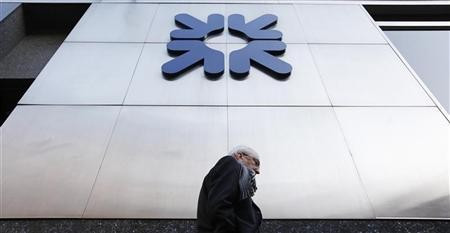RBS Creates Internal 'Bad Bank' to Deal With £38bn Toxic Assets

The Royal Bank of Scotland has created an internal "bad bank" in a bid to hive off and eventually pare down most of its £38bn worth of toxic assets within two years.
According to the group's third quarter financial results, RBS says it plans to remove 55-70% of toxic assets over the next two years, following the creation of the "bad bank".
As part of its RBS Capital Resolution plan, the group revealed that these risky assets "consume" 20% of its capital and said it plans to eliminate all the toxic assets within three years.
"Dealing with these assets now will strengthen our capital position, and speed recovery in our core business and the path to privatisation," said RBS in a statement.
"It will also remove distractions that have taken so much management time in recent years, stopping us concentrating fully on the customer.
"It will have strong, transparent governance through a board sub-committee that reports regularly to the main board."
Five years ago, RBS' non-core assets totalled £258bn (€305bn, $414bn) and has since reduced risk through its non-core division.
It has completed £220bn worth of asset reduction to date.
RBS posted a 2013 third quarter pre-tax loss of £634m, after it was hit by a £496m accounting charge for an improvement on its own credit.
RBS was bailed out with £45bn ($73bn, €53bn) of government funds in 2008 which resulted in it being 81% owned by the taxpayer.
Bank officials and the government dealt with its "toxic assets", which were originally estimated at £50-£60bn by US asset manager BlackRock Solutions.
BlackRock was appointed in July this year as an advisor on the Treasury's review of whether or not it should split the toxic assets of RBS off into a separate "bad bank" ahead of its eventual privatisation.
The UK Treasury has also commissioned Rothschilds, which is to prepare a report examining whether the bank should be split in two.
"We are looking at the case for a bad bank and if not a bad bank what is the alternative strategy that really gets on top of the problems in that bank and goes on being what I want it to be, which is a bank supporting the British economy," said UK Chancellor George Osborne.
© Copyright IBTimes 2025. All rights reserved.






















